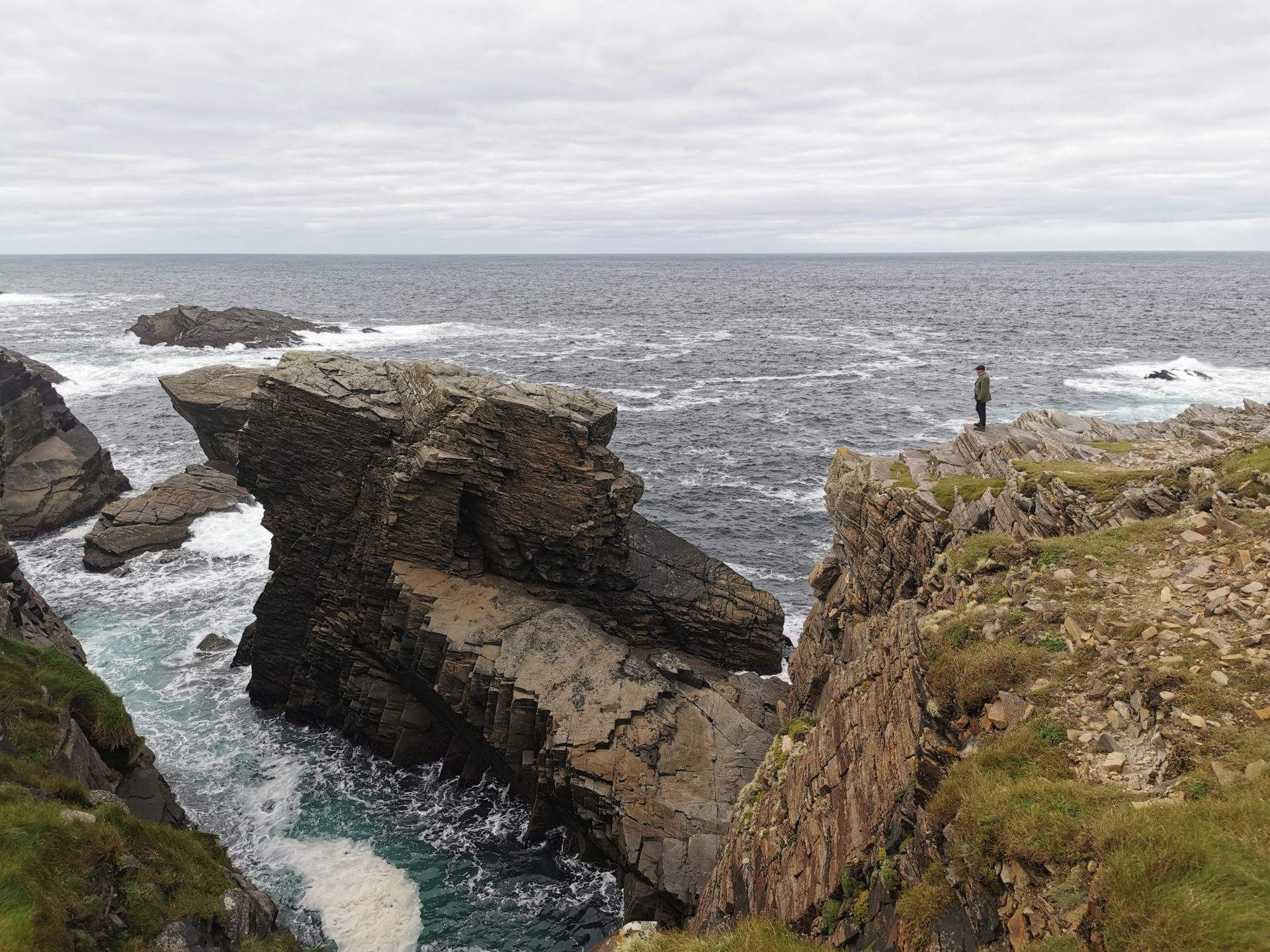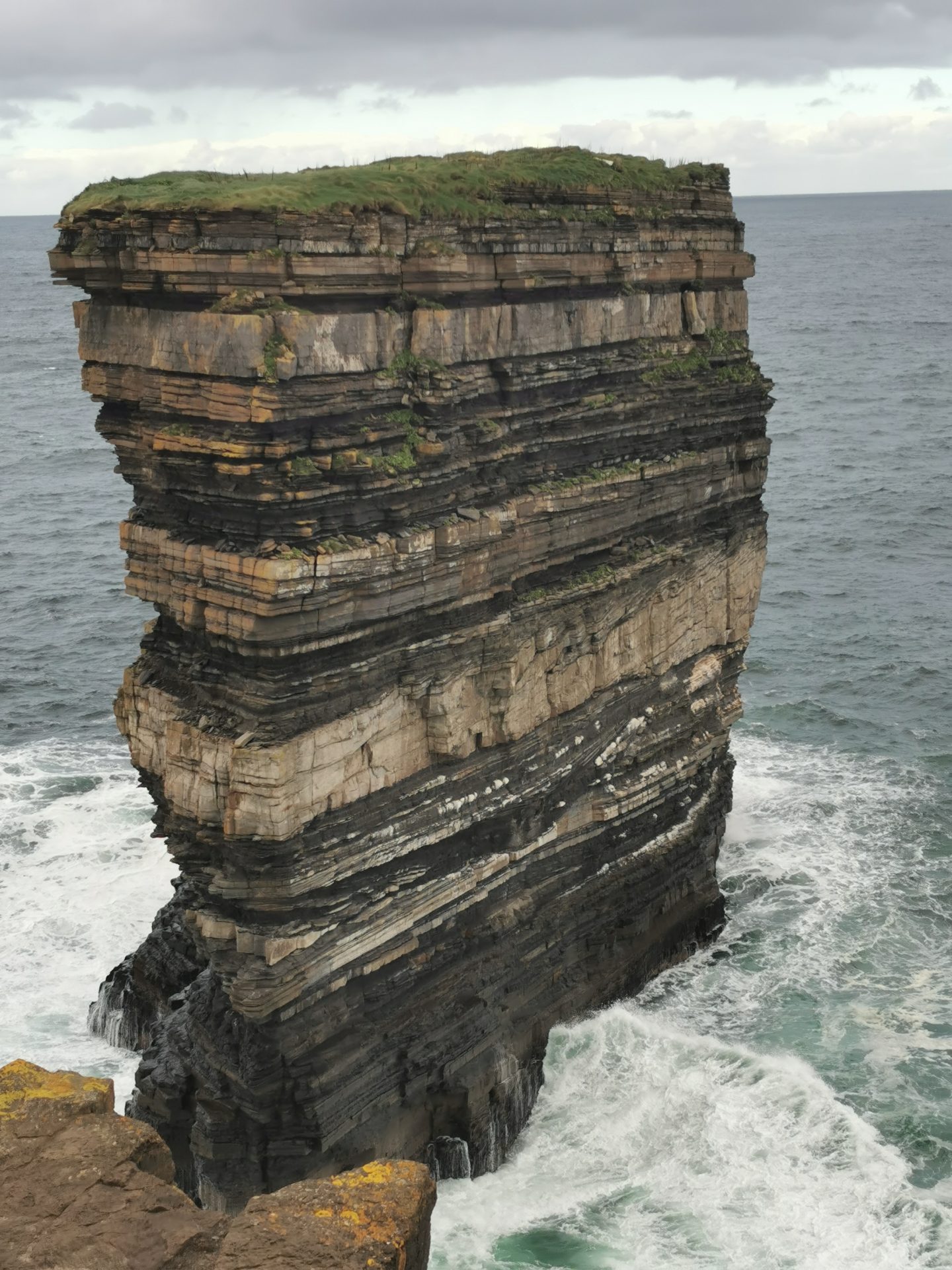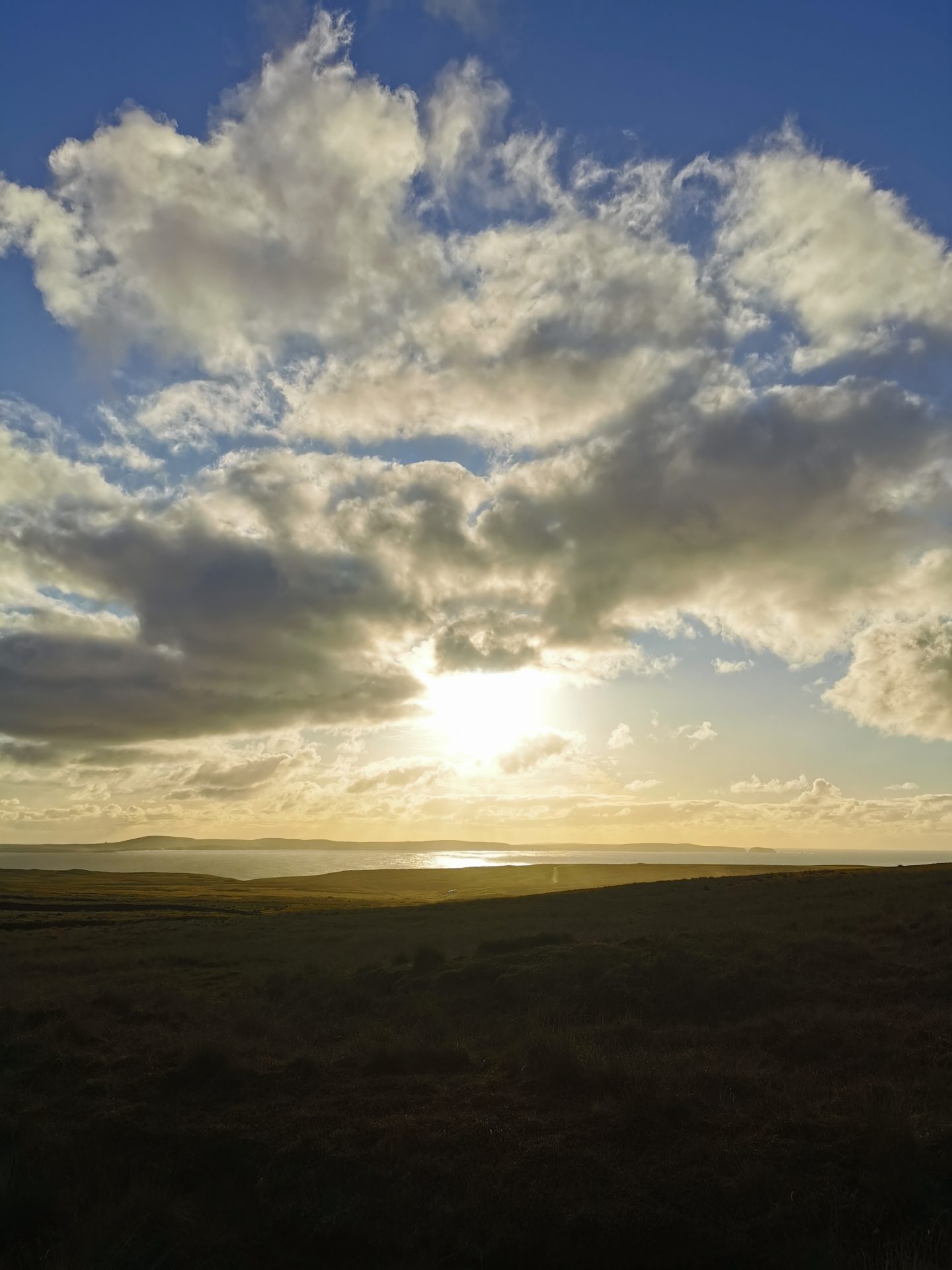It’s 3.30 in the afternoon and I’ve put the quest for the long forgotten pub behind me. We’re heading west to the coastal town of Ballinna when the traffic slows to a halt. We crawl for a few hundred metres to a roadblock manned by the Gardai. An officer greets me with a smile and, holding up an electronic device, says ‘Do you know what this is?’ I truthfully say no and he says, whilst fitting a mouthpiece, ’It’s a breathalyser. Just blow into the tube till it beeps.’ I’m unpleasantly surprised as I’ve never been breathalysed and this seems like the time and place for my inauguration. But this cop is out of luck. I’ve been well over the limit for days (years?) and he’s apprehended me on an off day. I blow, it beeps and I’m all clear.
‘Are ya on holiday here?’ asks the cop. ‘We are.’ says I. ‘Well,’ says he. ‘If you go down the road here a ways there’s a grand pub called the Beach Bar in Augris. Have you had yer lunch?’ ‘No’. ‘Well if the Beach Bar doesn’t take your fancy there’s another grand pub restaurant called The Talbot in Belmullet. Cheerio now.’ Only in Ireland would a cop breathalyse you then recommend a couple of boozers. Was he perhaps being intentionally mischievous?

After the roadblock we’re not that keen on the idea of a pub so we drive on to a carpark just above beautiful Ross Strand on Killala Bay where there’s a dune island off the beach. The tide is low but racing in. There are curlews, sending up their desolate cry, and oystercatchers and a flock of hundreds of cormorants on a spit of sand, drying their wings and being convivial. They’ll take flight on the flood tide and go fishing.
Overnight we experience the only unpleasant incident of our Irish journey. We’re in a small rectangular car park just above the beach when, in the middle of the night, a car races in and spins a series of fast handbrake turns. I pull aside the curtains to watch. The air is filled with the noise of screaming tyres and burning rubber. The following morning I see the tyre marks on the tarmac, just a few feet away from smashing into us.

We drive further west to Downpatrick Head, an astounding stretch of cliffs, above, what is today a massive ocean. The cliff path passes a series of enormous blowholes where sea caves have enlarged landward and upward or the earth above has collapsed. The Head itself is a massive rock or sea stack, isolated off the cliffs where there has been a cliff collapse. It consists of multicoloured layers of rock strata and today the ocean is boiling and crashing around its base. I leave Jo to take a thousand images and walk along the headland to watch kittiwakes flying impossibly close to the ocean swell. Jo captures an image of a young couple on top of the cliff, as an immense wave crashes upwards to engulf the cliff beneath them. Later she sees the couple, young Americans on holiday, and shows them the image and asks if they would like it. They’re overjoyed and emails are exchanged.


We live in North Yorkshire, a county with thousands of miles of drystone walls, so in homage to the craft of dry stone walling we visit the Ceide Stone Age dry stone walls. Built about 5,500 years ago to enclose domestic animals, probably cattle, these are the most ancient stone walls known to man. The remains of the walls, piles of old stones in a ditch, are interesting if you use your imagination, but the visitor centre is an obscenity. Easily overwhelming the simple thing it’s trying to curate, it’s marketing gone mad. The centre looks like a small cathedral complete with an ecclesiastical tower, and whilst some of the displays are relevant to Ireland’s Stone Age past, there’s lots of virtuous lecturing about carbon net zero and how Irish farming must change (disappear?) in our brave green world. On a board asking ‘What did you do in the last week to save the planet?’ I write, ‘I drank all my Guinness out of reusable glasses.’ The hypocrites who conceived this building must think that most visitors can’t possibly be aware of the vast amount of carbon fuel required to construct and maintain it. It’s an awful place.

Further west in the village of Beldering is a much more enticing construction. Behind the short harbour wall is a tidal rock swimming pool. Now, there are waves crashing over it and its not a time to swim in it, but we resolve to come back and swim when the tide recedes. We travel onward past vast peat bogs on a winding road through the hills to the small bay of Portacloy where there’s yet another wonderful beach of fine white sand and accumulations of beautiful pebbles of many colours and patterns. We have room in a corner of the van so we collect some of the prettiest.
We’ve just passed a small village bar that’s closed. The sign on the door says ‘Closed on Tuesday’ but its Wednesday. What the hell. We drive on, over clifftop grassland to deserted Benwee Head above the ravine, for gins and tonic in the glorious sunset. Mayo is a revelation.

The next morning we push on to Belmullet town where there’s another tidal swimming pool. I ease myself in without a wetsuit. Jo manages up to her ankles. A woman already swimming says, ‘Good morning, fresh isn’t it.’ It’s 14.6c which is, I suppose, fresh. We stroll down Belmullet main street to O’Donnell’s bar which is run by Mr O’Donnell, the local undertaker. It’s closed for a funeral so we head for the Talbot bar and restaurant as recommended by the breathalyser Garda officer. But the crab claws are 38 euros a portion and it’s more restaurant than bar. We head back to O’Donnell’s which is now open and the undertaker, in his black attire is sitting on a bar stool playing Jim Reeves. He’s very friendly, greets us with a handshake, so we stay for a couple of stiff drinks! In the afternoon we have our last walk in Eire, a circular ramble along the cliffs at Ennis Head. We’ll stop at Ross Strand again tonight before driving to Newry, County Down to visit my Irish cousins.

For the final stage of our Irish journey please visit Into Northern Ireland.
